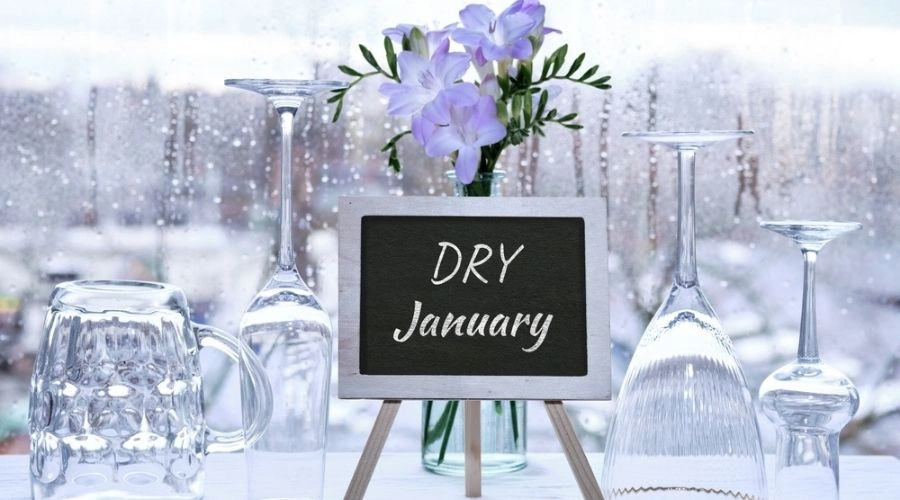How to Safely and Successfully Stop Drinking Alcohol
Taking a break from alcohol might sound like a good idea, but many people don’t know how to go about doing it successfully. About half of all people who currently drink have thought about scaling back their habit. But how can you take Dry January and transform it into a long-lasting experiment?
The first thing you’ll need to do is determine how much you currently drink. You may need to taper your alcohol consumption over the first week or two before you cut it out entirely. From here, you’ll need to find social support and give yourself time for reflection. Create a detailed plan for your break, stating when or if you will stop drinking and for how long.
South Shores Recovery wants to help anyone who is thinking about taking a break from alcohol. Our facility offers you a safe space to get help without the risk of relapse. Keep reading to learn more about how you can safely and successfully stop drinking for a full month.
How to Take a Break from Drinking without Alcohol Withdrawal

When you decide to get your alcohol consumption under control, it might be a savvy move to take a break from the bottle. This can be an enlightening experiment that may demonstrate dependence or highlight bad habits that keep you mired in alcohol use disorder. It can also give you an idea of what sober life looks like.
The question is: how can you stop drinking safely?
These ideas will help you get your drinking problem under control and may give you the courage you need to enroll in a residential treatment program.
Do You Have a Drinking Problem?
How much alcohol do you currently drink each day? This is the first question you need to ask yourself before you decide to give up alcohol consumption, even for a limited period. You’ll likely experience a few withdrawal symptoms if you currently drink 15 units of alcohol per day (men) or eight units a day (women).
You may need to track all your drinks for a week to see how much you intake. Then, you can gradually scale back your consumption until it makes sense to stop altogether. It can take a week or more to get to the point where you can cut it out for good.
The good news is that this gentle tapering can minimize your withdrawal symptoms. Most people will have uncomfortable but manageable symptoms such as sweating, shakes, and anxiety. However, if you have more serious withdrawal symptoms, you may want to enroll in a detox program.
Find a Friend Who Wants Help with an Alcohol Problem

It’s so much easier for heavy to moderate drinkers to quit the booze if they have a support system in place. Consider whether you know someone else who would like to take the challenge alongside you. Friends can help cheer you on and commiserate about how hard it is to stop drinking.
If you don’t know anyone drinking regularly and want to experience the health benefits of a Dry January experiment, you can access community resources. Alcoholics Anonymous is a great place to find others who are sober curious and supportive of your recovery from alcohol use disorder.
Especially if all of your friends have similar drinking habits, it may be helpful to have social events where the pressure to drink doesn’t exist. Alcoholics Anonymous can be great for this.
Make a Detailed Plan for Your Alcohol Use
Some people may not necessarily want to cut alcohol out entirely. If you’re drinking heavily, you might simply want to find a little space to harness the benefits of sobriety. This means you’ll have to set some guidelines and standards regarding what and how much you can drink each day or week.
For example, you might still allow yourself to have one drink or to drink one day each week when you go out with friends. You can also set parameters for how long this experiment will last so that you’ll be able to gauge when you’ve been successful in achieving your goal.
Make Space to Reflect on Temporary Abstinence
As you continue to think about what it looks like to quit drinking alcohol, give yourself some time and space to reflect on what you learn about yourself. This might look like meditating on key themes that come up for you during sobriety. You might journal about your feelings. Some people may even go to therapy to cope with the feelings that arise.
Reflecting on your experiences might make you realize that you need more help than you thought. If this is the case, South Shores Recovery offers a safe place to land for help with alcohol use disorder.
Health Benefits of a Dry January Experiment

You’ve committed to stop drinking. Now, you need to know what to expect from a Dry January or Sober October experiment. This month-long break from alcohol can open the door to a variety of benefits that reach further than you realized.
Lose Weight with a Break from Alcohol
The first and most obvious sign that you have given up alcohol consumption is usually the waistband of your jeans. Alcohol has a lot of calories in it, even if you drink spirits or light beers. Instead of nourishing your body, these empty calories can bulk you up with little to no benefits.
But the reason you’ll lose the stubborn belly fat goes beyond cutting calories. What’s more, alcohol can stop your body from burning fat.
Cutting back on alcohol speeds up your metabolism, allowing you to burn through the calories you do eat. You’re also likely to put a stop to those incessant cravings for unhealthy foods and snacks. If you are like most people, you’ll likely eat less as well when you take a break from alcohol.
Weight gain will be easier to combat when you don’t drink excessively. Cutting back also helps with insulin resistance and may make it less likely that you’ll develop type 2 diabetes.
Better Sleep with No Drinking Habits
Some people believe they can’t fall asleep without a glass of wine or a cocktail, but it isn’t true. It may help you fall asleep faster at night, but researchers found that it doesn’t help you stay asleep all night. The first night without a nightcap might feel difficult, but most people find that after a full month-long break, they have improved sleep quality.
You might have to take charge of your sleep life when you start approaching it alcohol-free. This means that you’ll need to unwind before bed, limit screen use, and stick to a routine that lets your body know it is almost time to go to bed.
Better Mental Health with Less Depression
In today’s society, we commonly end a hard day with a stiff drink. Many people feel like it allows them to relax, and they never question their relationship with alcohol. But when you stop drinking, even for a short period, you’ll find that your mental health improves.
Researchers found that people who gave up the bottle had lower rates of depression and fared better when it comes to concurrent mental health issues six months after they gave up drinking for good.
Lowered Blood Pressure and Improved Health

Especially if you have a family history of cardiovascular issues, heavy drinking can impact your overall health. Abstinence from alcohol has been linked to much lower blood pressure in people who drink at least 100 grams of alcohol each day. When your doctor notes in your chart that you have hypertension or heart disease, regular drinking could be the culprit.
Of course, you should always seek medical help if blood pressure is a concern. However, there are many lifestyle changes you can make, including taking a break from alcohol.
Additionally, your weight loss and improved adherence to dietary guidelines can also help you cut back on cardiac symptoms that can be life-threatening. Be sure to discuss a plan for whole-body wellness with your primary care physician before and after taking a few weeks off from drinking.
Don’t forget that drinking is also hard on liver function, which can be improved by quitting.
Get Help for an Alcohol Use Disorder at South Shores Recovery
If you try to get your drinking under control with a Dry January experiment and struggle to stay sober, it may be time to consider getting more help. We can help you coordinate a detox program where you can rest easy while you get sober before moving into our luxury rehab center. Once you’re here, there is no risk at all that you’ll go back to drinking alcohol.
Alcohol use disorder isn’t just for college students. Anyone can struggle with excessive drinking, and we believe treatment options should be available to all.
Our enrollment team is ready and waiting to answer your questions about the positive changes you can make. We’ll help you stay motivated and remind you of the benefits of putting down the bottle. Call our enrollment team today to ask your questions and reserve a spot in our residential program!
References
- Litten, R. Z., Kwako, L. E., & Gardner, M. B. (2025, January 6). The basics: Defining how much alcohol is too much. National Institute on Alcohol Abuse and Alcoholism.
- Kelly, J. F., Humphreys, K., & Ferri, M. (2020). Alcoholics Anonymous and other 12-step programs for alcohol use disorder. The Cochrane database of systematic reviews, 3(3), CD012880.
- Traversy, G., & Chaput, J. P. (2015). Alcohol Consumption and Obesity: An Update. Current obesity reports, 4(1), 122–130.
- Baliunas, D. O., Taylor, B. J., Irving, H., Roerecke, M., Patra, J., Mohapatra, S., & Rehm, J. (2009). Alcohol as a risk factor for type 2 diabetes: A systematic review and meta-analysis. Diabetes care, 32(11), 2123–2132.
- Park, S. Y., Oh, M. K., Lee, B. S., Kim, H. G., Lee, W. J., Lee, J. H., Lim, J. T., & Kim, J. Y. (2015). The Effects of Alcohol on Quality of Sleep. Korean journal of family medicine, 36(6), 294–299.
- Lina-Jolien, P., Rocío, G. J., Miquel, R., Margalida, G., Adoración, C., María Ángeles, P. A., Joan, S., Pau, R., & Mauro, G. T. (2022). Moderate alcohol consumption and depression prevention: A critical review. Actas espanolas de psiquiatria, 50(3), 126–133.
- Aguilera, M. T., de la Sierra, A., Coca, A., Estruch, R., Fernández-Solá, J., & Urbano-Márquez, A. (1999). Effect of alcohol abstinence on blood pressure: assessment by 24-hour ambulatory blood pressure monitoring. Hypertension (Dallas, Tex. : 1979), 33(2), 653–657.


Recent Comments